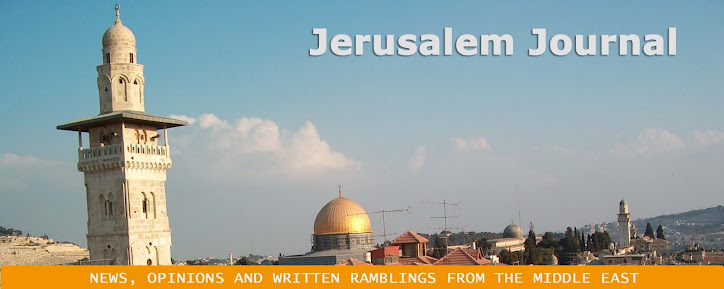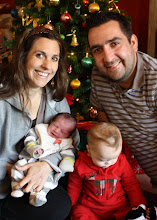HARASHA, Samaria – Ten years ago, Yehuda Eliyahu and a couple of other young and idealistic Zionists trekked up a desolate Samarian hilltop with nary a road in order to establish a community there. Now there is a paved road, which is harrowing enough, twisting up Mount Harasha where this collection of determined Jews turned the barren plateau into a neighborhood. Directly across from the Palestinian Authority’s capital of Ramallah, Harasha now stands as a statement to the ideology and beliefs of religious Zionists in Israel.
“When we got here, except for the [military] tower here and two small trailers, there was nothing,” Eliyahu told Israel Today. “We drove in a 4x4 [through the grass] to get here.”
Many of today’s full-fledged settlements—and the State of Israel itself—started exactly like this, as camps or small clusters of trailers. In the late 1800s, Jewish pioneers in Palestine built on undeveloped land, which later developed into modern-day towns and cities.
Today about 275,000 Jews live in communities in Judea and Samaria, which is the fastest-growing sector of Israeli society. (There are 5.7 million Jews in Israel.)
From the Harasha hilltop on a clear day one can see the Mediterranean Sea and lighthouses from as far north as Hadera to as far south as Ashkelon. To the east, Ramallah is in full view just across the valley. Strategic from a security standpoint and meaningful from a biblical perspective, Harasha is the highest peak in the area at about 2,300 feet (770 meters). The Israeli army uses the hilltop as a lookout post.
And yet it is places like this that are in jeopardy in “peace” negotiations between Israel and the Palestinians. Should Israel give up settlements in Judea and Samaria, Palestinians will control the high ground with a full view of Israel’s heavily-populated coastal plain. Although encouraged by government backing and funding 10 years ago, Harasha is now labeled “illegal” according to a special commission. The case is still in the Supreme Court.
The roadmap peace plan demands that some 100 “illegal outposts” in Judea and Samaria be dismantled, and the US has been pushing Israel to fulfill its commitments. While the government has promised to do so, it is reluctant because past evacuations have brought violent clashes between settlers and the security forces. Polls show that more than half of Israelis (some put the number at nearly 70 percent) believe the outposts should be removed.
“The fact that the world is against us isn’t important,” Eliyahu said. “If the Jews themselves don’t consider this the Land of Israel, how can we expect George Bush to say this is the Land of Israel?”
The 220 residents of Harasha are not planning to leave. They are “settler stock,” the kind of diehard, committed Jews who take the issue of land to heart. They sought land that was unsettled to keep Palestinians off it and claim it for the Jewish state. The pioneers roughed it at first, but residents now live in small caravans (trailers) while some are building permanent housing on the edge of the hilltop. The community is replete with a synagogue, day care center and more than one kindergarten.
Rachel Shaaravi, who moved here nine years ago, said the transition was difficult but important. Another resident, Gali Malka, made a sober comparison: “It’s a better place to raise children than Sderot right now,” he said, referring to the southern Israeli town bombarded daily by Palestinian rockets with scant government protection.
Harasha lies amid a network of Jewish and Palestinian villages right next to each other. You cross a military checkpoint to get in and out, but once inside it’s a free for all. Turn left and you go to the Palestinian neighborhood of Janiya, turn right and you’re off to the Jewish settlement of Dolev.
With Palestinian snipers aiming at the shared roads, living in the territories appears more risky than Sderot. But not to the Jews who live there.
“Danger is relative. I am a victim of terror, but I’ve never been hurt here [in Harasha],” said Eliyahu who was shot in the leg by a Palestinian sniper while driving. “Is it any less dangerous here than Jerusalem? Tel Aviv? In this land, we are in a war with the Arabs—every place could be dangerous.”
The religious Zionists who live here dominate Israel’s right-wing settlement movement. They believe that the Messiah cannot return to redeem humanity until the biblical state of Israel is recreated between the Mediterranean and the river Jordan, or, as some say between the Euphrates and the Nile.
There is overwhelming international opposition to the settlements, much as there has been to the State of Israel itself over the past 60 years. But Israel has flourished despite the difficulties, due in large part to tireless pioneers and settlers.
Eliyahu, 30, is the quintessential settler. He grew up in the Gush Katif settlement bloc in Gaza and was expelled when Israel pulled out of the territory in 2005. Then, he intentionally made his way to another swath of controversial land constantly under international scrutiny. Eliyahu, who has never left the country, says his purpose is simultaneously religious and ideological.
“We are part of the redemption of Israel. The days of salvation are very difficult,” he said. “Most of Israel doesn’t even understand this, but this is part of the process and we are a part of it.”
The support of Christian Zionists is “another sign of the age of redemption,” he says. “There are goyim [Gentiles] who understand that the people of Israel need to be strong in the Land of Israel.”
May 1, 2008
Subscribe to:
Posts (Atom)


